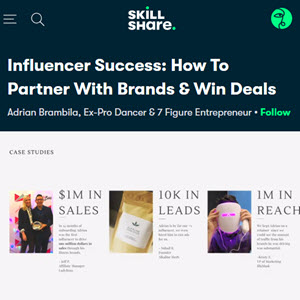Tweeting: How To Get The Most From Your 140 Characters
Twitter is a strange beast. It is the second most popular social network in the world, and a favourite for those of you who like to keep up with the day-to-day goings on of your favourite celebrities. However, Twitter can also be a goldmine for marketers looking to connect an audience with their brand.
You may feel that 140 characters does not give you much flexibility for marketing posts. Whilst it is certainly true that you don’t have access to the wealth of features that Facebook and Google+ offer, it just means you have to be a bit more imaginative.
With the average useful lifespan of a Tweet sitting around the 18 minute mark, you have to make sure that your posts are hitting all of the right notes.
Please allow us, therefore, to present our guide to Tweeting, and how to get the most from your 140 characters.
Storytelling
People love a good story. They draw us in and take us on a journey to faraway places – both temporally and spatially. If your business has reached an important milestone, then you can use Twitter to tell people about it and link to a larger article about it. Be sure to include an image and a call to action to further your chances of catching people’s attention.
Know Your Audience
As with much of social media, knowing and catering to your audience is a key component of maximising your impact. If your business is mass market and aimed at the general public, then you want be using a friendlier and more personable style of communication. However, if you are catering to professionals and businesses, then they might appreciate a more direct and straightforward tone.
Create a buyer persona to help you identify the sorts of people that you want to be targeting and speak in a manner that befits them. There is no hard and fast rule, however, so experiment a little to find a good fit.
Know Thyself
It is not only important to communicate in a style that befits your audience, but also in a manner that befits yourself. To achieve this, your posts should make it clear to your audience what your ethos is and opinions are.
By remaining consistent and true to yourself, you are more likely to attract likeminded people to follow your Twitter feed. Because they are people who share your views, they are more likely to engage with the things that you post.
Use Effective Calls To Action
Research by Twitter looked at the ways in which different calls to action affected the level of engagement that over 20,000 tweets received when compared to their call-free kin.
The most effective calls to action involved asking users to download something. People love a freebie, so linking to a free app or PDF etc. can be a great incentive to get them engaging with your posts.
A retweet request was the second most popular. You can run contests of sweepstakes to incentivise these or use brand affiliation to encourage users to retweet.
Also consider using the full word “retweet” rather than the more popular “RT” as this has been shown to make a difference when it comes to engagement. Obviously this won’t always be possible thanks to Twitter’s strict 140-character limit, but do it as often as you can.
Calls to follow are also effective. Make sure that you include some of the benefits of following when asking users to do so. Draw attention to daily competitions or free content etc. to make sure that people understand that they have something to gain by hitting that follow button.
Resurrect Your Tweets
It is incredibly unlikely that all of your followers are going to be online every time that you post a new tweet. Invoke a little necromancy to your little mayflies by sharing the same tweet multiple times.
This should not be interpreted as constantly spamming the same post over and over again. Instead consider posting each tweet maybe two of three times over a couple of days. There are tons of scheduling tools out there that will make this process more or less automatic, so there is really no excuse.
Use Images
This point has become more or less moot by this juncture in time I hope. People respond well to images… the brain processes them faster… more likely to share etc. etc. Use images to get your message across and add some text – meme style – to help to hammer it home.
Use Numbers
Not just any numbers, you understand, but statistics. If you are trying to make a case for something, then using statistics is a great way of lending credibility to your argument.
Point out percentages (90% of people love our product), ratios (8/10 cats prefer…) or other statistics are a great way of persuading people of the benefits of your brand and to increase your authority on a topic.
Use Quotes
Leverage the legendarily short attention spans of internet users by distilling content down to a catchy or inspiring quote. As I’m sure a quick glance at your Facebook feed will tell you, people love to share quotes. And one share could lead to many more, which increases the chances of people linking back to your pages and engaging with your content on a deeper level.
If you are sharing an article or other piece of written content, then post it with a quote from the actual piece that will catch people’s attention.
Use Influencers
Identify and engage with key influencers in your field and your tweets will have a lot more potential for stardom.
Influencers will more than likely have access to many more followers than you do and by building a relationship with them, you may be able to leverage this to increase the reach of your tweets.
Write a blog article about them or reference their ideas in an article and give credit. Include them on a ‘Top Five Influencers’ type article and send it to them. We all have egos and they all enjoy a little massaging. You don’t want to come across as sycophantic, but do things right and you can build a relationship that will pay dividends in the long run.
And always thank them whenever they share something of yours.
#Hashtags
This is an article about Twitter, so we have to talk hashtags.
Some people love them, and some people loathe them. We’ve all seen Instagram, or Facebook posts with an excessive number of hashtags, and they always look bloated and ugly. In my personal posts, I actually hate using them, unless it is in sarcasm of course. All gloves come off when it comes to sarcasm.
However, in marketing they can be invaluable.
Don’t go crazy with them, and don’t try and be funny or sarcastic with them, but rather use them to focus people in on your content. Tags such as #Twitter and/or #marketing would go well with this article for example. Maybe the name of a key influencer would also be a good idea, such as #GarySmith (oh, stop it. No, you stop it…) to get their attention and increase your chances of a share or retweet.
Hashtags can be brilliant for increasing the lifespan of your tweets, as they can pop up in people’s searches, long after they have vanished from their feeds.
Tidy Up Your Profile
Ok, so this last one isn’t directly related to what you’re tweeting, but you need to make sure that your profile is in good order.
Start with the profile picture, right or wrong, many of us make our minds up about a person within moments of meeting them and the same is very much true online. The default egg will not suffice, nor will you sucking Bailey’s (other Irish cream liquors are available) out of someone’s bellybutton on that Ibiza holiday from two years ago.
So make sure there is a clear and smart picture of either yourself, or your company logo in that little box.
Your bio is also important. Fill it with information about who you are (professionally) and what you do (again, professionally). Give browsers a reason to follow your profile but telling them the sorts of things they can expect from your Twitter feed. Twitter is a sea of meaningless information, so make sure people know they are going to get something of value when they hit that little blue button.
In Conclusion
We trust you have found our Twitter guide useful. Even if it’s not all new information to you, it never hurts to go over it again, and hopefully you have managed to glean something from it that you can use in your marketing endeavours.
Twitter is a fantastic tool for marketing if used correctly. However, if you aren’t up to speed on all of the tips and tricks, it can feel like you are hurling a lot of stuff at the wall, and none of it is sticking.
Anything you can do to optimise or extend that 18-minute window of exposure that your tweets have is time well spent. With a little practice and by following some of the tips that we have laid out here, your tweets should see an increase in engagement that will keep existing followers coming back and draw new ones in.
Continue reading here: The Bumper Guide to Small Business Blogging
Was this article helpful?


